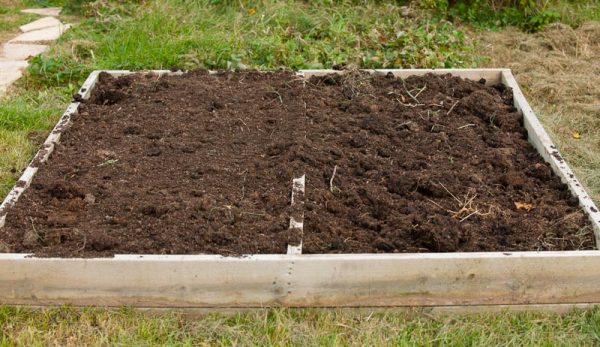
Spring is underway, and chances are you’re busy preparing your garden for planting season. If you’re keen to expand this year and grow more of your own food, you’re probably thinking about building raised garden beds. But building beds is only half the battle—the next step is to fill them with quality soil.
Whether you’re pulling the soil from your own compost pile or sourcing it from another location, you’ll need to calculate the volume of soil you need. This goes double if you plan to add amendments to the soil.
To make sure you don’t apply too much (or too little), you need to determine the volume of soil and distribute the amendment accordingly.
Read more: Here are some quick tips for building raised garden beds.
Grab Your Calculator
Fortunately, it’s easy to calculate how much soil you need to fill a raised bed. Yes, it involves a little algebra, but there’s no need to run screaming in another direction! This isn’t the imposingly complicated and theoretical algebra you learned in high school.
Here’s the magic formula you need to calculate soil volume in raised garden beds:
W x L x D = Vft3
Confused? There’s no need to be—this is really just a straightforward multiplication problem. It only looks complicated because we haven’t punched in the real numbers yet.
Break It Down
Let’s explain the variables in the equation:
W = the width of your garden bed, in feet
L = the length of your garden bed, in feet
D = the depth of your garden bed, in fee.
V = the volume, in cubic feet, of soil you will need to fill the bed
Now, let’s replace the variables with numbers. Suppose your garden bed measures 3 feet wide by 8 feet long, and you want to fill the bed 12 inches (1 foot) deep. Suddenly, the equation looks more like a real math problem:
3 x 8 x 1 = 24ft3
If you want to fill the bed 2 feet deep, you’ll need twice as much soil. This is reflected in the updated equation:
3 x 8 x 2 = 48ft3
Read more: You should compost! Here’s why and how you can get started.
Change It Up
Now let’s change up the numbers significantly. Suppose your bed measures 4 feet wide by 10 feet long, but you only wish to fill it 8 inches (0.67 feet) deep. So long as you remember to convert inches into feet, the formula continues to work just fine.
4 x 10 x 0.67 = 26.8ft3
If you would like to measure using a unit other than feet, feel free to do so! Inches, yards, centimeters, meters—all can be used with accurate results, so long as you don’t mix and match different units of measurement:
Meters: 1 x 3 x 0.5 = 1.5m3
Inches: 12 x 36 x 6 = 2,592in3
This same formula can be used to calculate the carrying capacity of a wagon or trailer. Suppose you plan to haul compost to your garden in a wagon measuring 4 feet wide by 9 feet long and 2 feet deep. If you fill this wagon to the brim (and level off the compost so it’s not heaping above the sides of the wagon), you’ll be hauling exactly 72ft3 of soil—enough to fill three beds measuring 3 feet wide by 8 feet long and 1 foot deep (containing 24ft3 of soil).
Congratulations! You have successfully calculated how much soil you need to fill your raised garden beds. Happy growing season!




